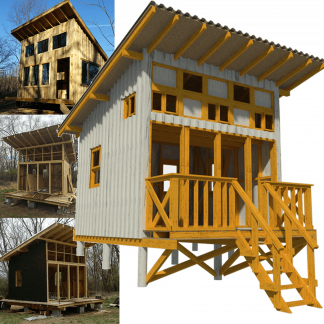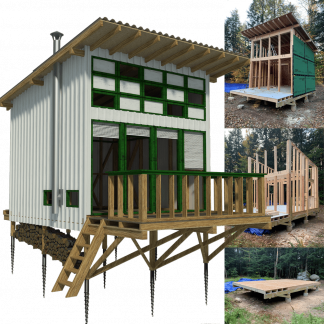
Advanced display and audio technology, combined with increasingly affordable gear, mean that even modest budgets can deliver a convincing cinematic vibe at home.
With savvy planning and strategic budget allocation, you can build an immersive home cinema for well under $2,000 no splurges on luxury needed.
Planning & Budget Allocation
A clear budget framework steers every decision, so start by assigning roughly 30–40 percent to video, 40–50 percent to audio, and 5–10 percent each to acoustics, seating, and accessories.
If you already own a decent TV or speakers, reusing them can free up funds for upgrades elsewhere. Always weigh performance gains against extra cost.
Favor spending more on long-lasting, performance-critical components like speakers and acoustic treatment, while skimping on gear that ages fast (e.g., AV receivers, streaming boxes).
Key Components of a Home Cinema

Must-Haves
- Display: A projector plus screen or a large-format TV; this is the visual centerpiece of your setup.
- Audio System: At minimum, a 5.1 surround package or soundbar with subwoofer for room-filling sound.
- Seating: Comfortable chairs or a sofa, arranged at 1.5–2.5× the screen height away for ideal sightlines.
- Lighting: Bias/backlighting and blackout curtains to control glare and enhance perceived contrast.
- Room Setup: Speaker placement at ear level and minimal reflective surfaces for clear dialogue and tight bass.
Nice-to-Haves
- Snack Stations: A small cart or cabinet for popcorn makers and drinks keeps the vibe authentic without breaking the bank.
- Decor: Movie posters, themed wall art, or LED strip accents add personality and immersion.
- Basic Automation: Smart bulbs, a universal remote, or a budget home-automation hub to dim lights and control devices with a tap.
Room Selection & Layout

Alt text: Room Selection & Layout
Choosing the right room and arranging it thoughtfully lays the foundation for immersion.
First, pick a space with minimal ambient light, such as a basement or an interior room without windows; this prevents glare on screens and preserves contrast. Ensure the room’s dimensions support a large screen and multiple seating rows without feeling cramped. Finally, minimize reflective surfaces, opt for matte paints, heavy curtains, or wall panels to reduce unwanted echoes and light bounce.
Optimal Seating Distance
A 100-inch diagonal screen is about 49 inches tall (100 × 9/18.36).
If you want to stick with the “1.5–2.5× screen-height” rule, that works out to:
- 1.5 × 49″ ≈ 73.5″ → 6 ft 1 in
- 2.5 × 49″ ≈ 122.5″ → 10 ft 2 in
But the more common guideline is 1.5–2.5× the screen diagonal, which for 100″ becomes:
- 1.5 × 100″ = 150″ → 12 ft 6 in
- 2.5 × 100″ = 250″ → 20 ft 10 in
Which should you use?
- Use screen-height (6–10 ft) if you’re in a small living room and your priority is maximum immersion without straining your eyes.
- Use screen-diagonal (12½–20¾ ft) if you want a more relaxed viewing zone that also accommodates family traffic flow and a broader “sweet spot” for multiple viewers.
Traffic Flow & Sightlines
Arrange furniture so that the surround speakers aren’t blocked by chairs or tables, keeping side and rear channels clear for an even soundfield. Plan traffic paths around seating areas to avoid interruptions during playback, and angle seats to maintain unobstructed views of the screen.
Video Display Options
Deciding between a projector and a TV depends on budget, room lighting, and desired screen size.
Budget Projectors vs. TV Panels
- Cost-per-inch: Projectors can deliver 100–120-inch images for $200–$600, while comparably sized TVs often start above $1,000.
- Ambient-light trade-offs: TVs excel in brighter rooms thanks to higher brightness, whereas projectors need darker environments or an ALR screen to combat washout.
Screen Size & Type
- Fixed-frame screens offer uniform tension and a clean viewing surface, but cost $150–$300.
- DIY alternatives, like spandex-stretched frames or wall-mounted paint kits, can keep costs under $50 while still delivering a crisp image.
Refurbished Deals
Scoring last year’s 4K TVs or certified refurbished projectors can save 15–30 percent, unlocking higher-end performance for less. If you’re looking to upgrade your setup without overspending, seasonal deals can help stretch your budget further. For instance, the TV Boxing Day sale often features excellent discounts on large-format and 4K TVs, making it easier to create a true cinematic experience at home without breaking the bank.
Resolution & Brightness Balancing
- Choose 1080p if you’re under 80 inches diagonal or on a tight budget; 4K shines on larger screens and future-proofs your setup.
- Aim for 2,000–3,000 lumens in projectors for dark rooms, and 3,000+ lumens if any ambient light remains.
Audio System Essentials

Alt text: Audio System Essentials
Great visuals demand equally compelling sound. Here’s how to do audio on a budget:
Home-Theater-in-a-Box vs. Component Systems
- All-in-one kits bundle an AV receiver and 5.1 speakers for around $400.
- Component setups (separate AVR + speaker packages) start at $600 and offer clearer sound and easier upgrades.
Receiver Features
Look for HDMI 2.1, eARC, and basic Atmos/DTS: :X Decoding in a midrange AVR, these features ensure compatibility with modern sources without the premium price tag.
Speaker Layout & Upgrade Path
Begin with a 5.1 configuration, three front channels, two surrounds, plus a sub, and plan wiring or space for future 7.1.4 Atmos expansion. Always match the front-left, center, and front-right speakers from the same series for tonal consistency.
Subwoofer & Surround Allocation
Dedicate about 20 percent of your audio budget to a quality subwoofer and discreet surrounds; deep bass and enveloping effects hinge on these channels.
DIY Speaker Hacks
- Enclosure upgrades: Build or modify speaker boxes using MDF, concrete, or wood to improve bass response and eliminate rattling.
- Placement tips: Angle floor-standers inward at 45–60 degrees and elevate bookshelf speakers to ear level for maximum clarity.
Seating & Comfort

Alt text: comfortable seating for home cinema
Cost-Effective Seating
Ultimate Home Theater Seating Guide! Pick The Right Seats
Repurpose recliners, modular sofas, bean bags, and floor cushions to score comfortable seating without splurging on dedicated theater chairs.
Theater-Style Mods
Add cup holders to armrests or side tables for that authentic cinema feel. Build risers from thrifted wood or pallets, sand and seal reclaimed lumber for safety and a polished look.
Ergonomics & Sightlines
Align seat backs so the center of the screen hits eye level (1.2–1.5 m from the floor) to avoid neck strain. Maintain at least 0.5 m of legroom between rows for easy access, and use the 1.5×2.5×screen-height rule to calculate optimal viewing distance.
Lighting & Ambiance
LED Bias & Backlighting
Install LED strips behind the display to raise perceived contrast and ease eye fatigue. Kits start around $15 and plug into a USB port for power.
Blackout & DIY Light Control
Heavy blackout curtains work best, but can be pricey. Aluminum foil or cardboard inserts for windows block nearly all incoming light at virtually zero cost.
Dimmable & Smart Lighting
Use smart bulbs with app-based dimming or retrofit fixtures with inline DIY dimmer modules for under $20 to adjust wall and ceiling lights at will.
Textiles for Light & Sound
Thick rugs and heavy drapes block stray light and absorb mid-range frequencies, reducing echo and improving overall sound quality.
Acoustic Treatment
First-Reflection Panels
Mount DIY panels at first-reflection points (where sound bounces off the walls before reaching you) to tighten imaging and clarity.
Corner Bass Traps
Build corner traps using wooden frames filled with rockwool or Owens Corning insulation (2″–4″ thickness) to tame low-frequency buildup.
Affordable Panel Materials
Use Safe’n’Sound rockwool panels (~$20 each) wrapped in breathable fabric or recycled acoustic tiles made from foam and cloth scraps.
Diffusion & Soft Furnishings
Scatter sound with budget diffuser kits or DIY PVC arrays, and supplement absorption with thick carpeting for a balanced, immersive soundstage.
Connectivity & Media Sources

Alt text: Connectivity & Media Sources
HDMI vs. Optical vs. eARC
HDMI 2.1 cables carry both video and high-bit-rate audio (including Dolby Atmos and DTS: X) in one cable, supporting up to 4K @ 120 Hz or 8K @ 60 Hz. Optical cables handle audio only and are limited to 5.1 channels with lower bandwidth. eARC on HDMI 2.1 enables uncompressed multichannel audio return from the TV to the receiver.
Streaming Devices vs. Physical Media
Streaming sticks (Roku, Fire Stick, Chromecast) cost under $50 and offer all major apps. For those with local libraries, a Blu-ray player ($80–$120) or free media-server software (Plex/Kodi) ensures bit-perfect playback.
Remote Control & Cable Management
A universal IR/RF remote or smartphone app consolidates control. Conceal cables in PVC channels, zip ties, or raceways to maintain a tidy, safe setup.
Optional Help: When to Call the Pros
While a DIY home cinema setup can save hundreds, there are times when calling in a pro makes sense, especially for mounting heavy TVs or routing cables through walls. If you’re not confident drilling into studs, hiding wiring, or ensuring a level mount, it’s worth checking out experienced TV installers in my area to get the job done right without risking damage or rework. Many offer flat-rate pricing and quick turnaround, letting you focus on enjoying your system instead of troubleshooting it.
Calibration & Optimization
Picture Calibration
Use built-in test patterns and free apps (e.g., THX Tune-Up, AVS HD 709) to set brightness, contrast, and color temperature. For projectors, aim for a D65 white point and gamma ~2.2 for balanced shadow detail.
Audio Leveling
Run your AVRs’ auto-calibration (Audyssey, YPAO, Dirac Live) to set distances and levels. Follow up with manual EQ: cut peaks at 200–400 Hz for tighter bass and boost 2–4 kHz for clearer dialogue.
Budget Breakdown
| Tier | Total Spend | Key Components |
| Basic | $500–$1,000 | 43–55″ TV or entry projector; soundbar or 2.1 kit; repurposed seating; DIY blackout & panels. |
| Mid-Range | $1,000–$2,500 | Entry-level 4K projector; 5.1 component speakers + AVR; basic acoustic panels; streaming stick. |
| Premium | Up to $5,000 | 4K @ 120 Hz projector or OLED TV; Atmos AVR + 5.1.2/7.1.4 speakers; fixed-frame screen; motorized riser; full acoustics. |
Common Mistakes to Avoid
- Overspending on low-impact features: Don’t blow your budget on 8K or top-tier receivers if your room can’t showcase them.
- Neglecting acoustics: Hard surfaces create echoes that muddy dialogue. Treat first reflections and corners with rugs, curtains, or furniture. For a more effective and tailored solution, consider installing acoustic panels designed to absorb sound and improve clarity.
- Skipping cable planning: Tangled wires are a hazard and an eyesore; plan routes and use raceways or channels.
Real-Life Examples / Case Studies
Case Study 1: $800 Living-Room Cinema
A second-hand 1080p projector ($300) paired with a thrifted sofa ($100) and a used 5.1 soundbar kit ($200). Add heavy curtains and DIY foam panels for under $50 total: $800.
Case Study 2: $1,500 Basement Setup
A certified-refurbished 4K projector ($600), component speakers + AVR ($400), rockwool panels ($200), used recliners + pallet risers ($150), plus bias lighting and blackout inserts total: $1,500.
DIY Hacks & Pro Tips
- Refurbished bargains: Save 15–30% on certified pre-owned electronics.
- Creative mounts/stands: Use PVC pipe or lumber to build projector mounts and speaker stands for under $20.
- Upcycled furniture: Pallets or thrifted bookcases make risers and media storage. Sand, seal, and paint for a polished look.
- DIY decor & snack stations: Thrifted posters, LED rope lights, and a repurposed bar cart for popcorn and drinks add flair on a dime.
FAQs
Can I use a plain white wall as a projector screen?
Yes, matte white paint works, but dedicated screen paint or a DIY spandex frame delivers better contrast and color accuracy.
Is surround sound worth it in a small room?
Absolutely compact satellites and a small subwoofer can create an enveloping experience even in tight spaces.How do I reduce echo without panels?
Use rugs, heavy curtains, wall tapestries, large plants, or overstuffed furniture to absorb and scatter reflections until you install formal treatments.








